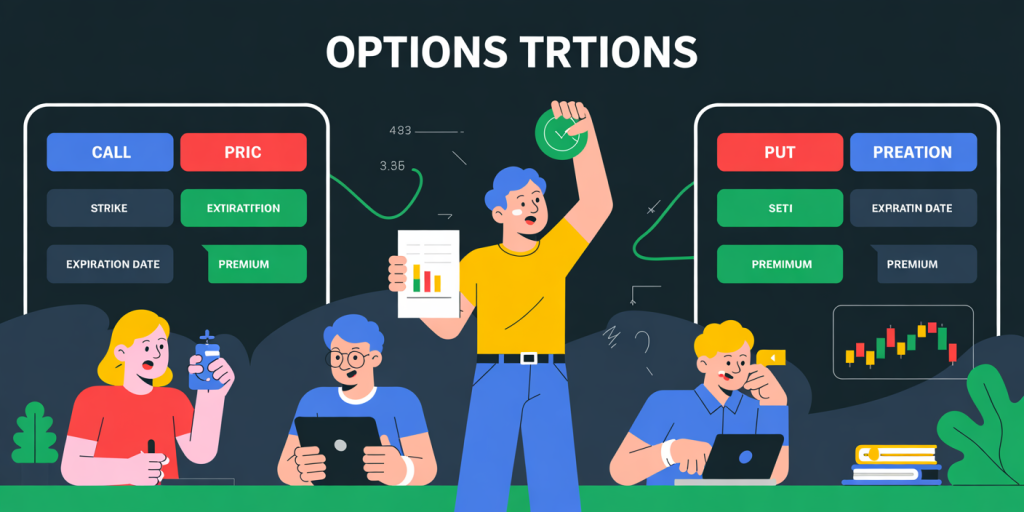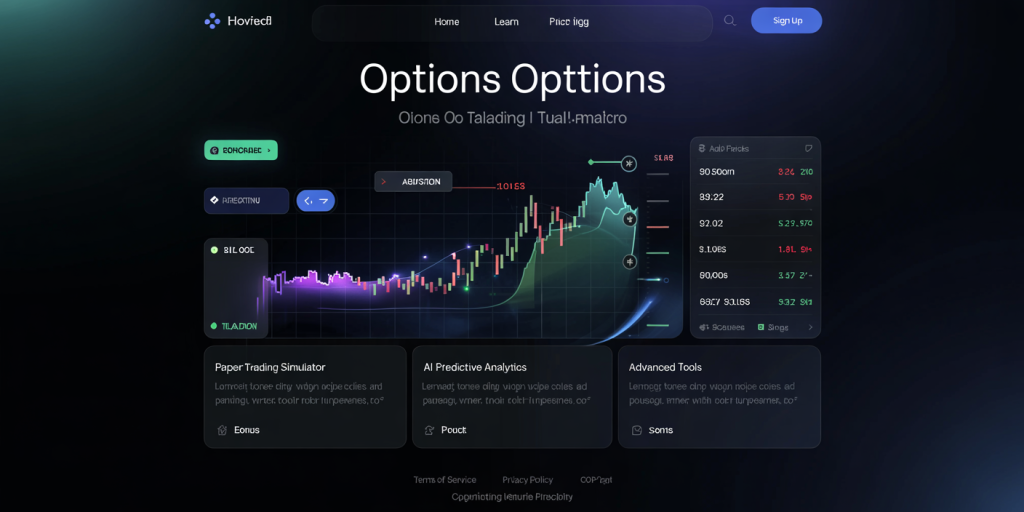Options trading has gained significant traction in recent years as more retail investors seek to diversify their portfolios and leverage advanced financial tools to maximize returns. Unlike traditional stock trading, options provide unique strategies for hedging risk, speculating on market movements, and generating income. However, the complexity and jargon surrounding options can be daunting for beginners. This article offers a comprehensive overview of options trading, designed specifically for newcomers who want to understand the fundamentals and make informed decisions.

Understanding What Options Are
Options are financial derivatives that give the buyer the right, but not the obligation, to buy or sell an underlying asset at a predetermined price before a specified expiration date. The two primary types of options are calls and puts. A call option allows the holder to purchase the asset, while a put option gives the right to sell it.
For example, if an investor buys a call option for stock XYZ with a strike price of $50 and an expiration date of one month, they can buy the stock at $50 anytime within that month regardless of the current market price. If the stock price rises to $60, the investor could exercise the option to buy at $50 and immediately sell at $60, securing a profit. If the price doesn’t reach $50, the option may expire worthless, limiting the loss to the initial premium paid.
Options are priced based on factors such as the underlying asset price, strike price, time to expiration, volatility of the asset, and prevailing interest rates. These multifaceted components underscore why understanding options requires attention to several variables, unlike traditional stock trading.
Essential Terminology for New Traders
Navigating options trading effectively depends on mastering its unique terminology. Key terms include strike price, expiration date, premium, in-the-money (ITM), out-of-the-money (OTM), and intrinsic vs. extrinsic value.

The strike price is the pre-set price at which an option can be exercised. Options are categorized as ITM if exercising the option would yield a positive payoff. For instance, a call option with a strike of $40 on a stock currently trading at $45 is in-the-money. In contrast, if the stock price is $35, the call option is out-of-the-money and likely has a lower premium.
The premium is the cost paid by the buyer to the seller (writer) of the option. This price incorporates both intrinsic value (actual value if exercised immediately) and extrinsic or time value, reflecting speculation on future price movements and volatility.
An example to clarify: Suppose stock ABC trades at $100. A call option with a strike price of $90 is ITM with $10 intrinsic value. If its premium is $12, then $2 represents the extrinsic value. Understanding these nuances helps traders evaluate whether an option is fairly priced and devise appropriate strategies.
Common Strategies for Beginners
Options offer multiple strategic frameworks depending on market outlook and risk tolerance. Beginners should focus on a few basic strategies to gain practical experience before advancing to complex trades.
1. Covered Calls: This approach involves owning the underlying stock while selling call options equivalent to the stock holdings. The goal is to generate additional income from premiums while potentially selling the stock at a target price. For example, if you own 100 shares of Company DEF trading at $50, you could sell a call option with a $55 strike price expiring in one month. If the stock remains below $55, you keep the premium; if it rises above $55, you sell your shares for a profit plus the premium.
2. Protective Puts: This strategy is akin to an insurance policy, where investors buy put options to limit downside risk on stocks they own. Suppose you hold shares of GHI stock at $75 but anticipate potential short-term volatility. Purchasing a put option with a strike price of $70 safeguards against losses below that level, as you can sell at $70 regardless of market dips.
3. Long Calls and Puts: These are simple directional bets. Buying a call option is a bullish move, expecting price appreciation; buying a put is bearish. Compared to buying the stock outright, options provide leverage, meaning you can control more shares with less capital. However, the risk is limited to the premium paid, which may expire worthless.
A table summarizing these starter strategies is helpful:
| Strategy | Position on Stock | Directional View | Risk Level | Reward Potential | Example |
|---|---|---|---|---|---|
| Covered Call | Own shares + Sell calls | Neutral to moderately bullish | Limited downside, capped upside | Premium received + stock gains up to strike | Own 100 shares at $50, sell $55 calls |
| Protective Put | Own shares + Buy puts | Neutral to moderately bearish | Limited downside via put | Unlimited upside minus premium cost | Own stock at $75, buy $70 puts |
| Long Call | Buy calls | Bullish | Premium lost if stock falls | Potentially unlimited upside | Buy calls at $50 strike on rising stock |
| Long Put | Buy puts | Bearish | Premium lost if stock rises | Gains increase as stock falls | Buy puts at $50 strike on falling stock |
Risks and Rewards: Balancing Act in Options
Options are attractive because of their leveraged nature, but with leverage comes significant risk. Unlike stocks where investors can hold indefinitely, options are time-sensitive and can expire worthless, resulting in 100% loss of the premium paid.
According to data from the Options Clearing Corporation (OCC), approximately 80% of options expire worthless, highlighting the risk of poor timing or wrong market predictions. However, this statistic also emphasizes the importance of understanding the type of options, strike prices, and expiration dates to minimize losses.
Leverage magnifies both gains and losses. For example, consider an investor who pays $200 for a call option contract (representing 100 shares) on a stock trading at $100 per share. If the stock price surges to $120, the option’s intrinsic value might rise to $2,000 (20 x 100 shares), creating a 900% return on investment. Conversely, if the stock price remains below $100, the option expires worthless, and the $200 is lost.
Because of this risk-reward profile, beginners are advised to start with strategies minimizing losses such as covered calls or protective puts while gaining familiarity with market mechanics and option Greeks such as delta, gamma, and theta, which describe price sensitivity to underlying variables.
Platforms and Tools for New Traders
Selecting the right trading platform significantly impacts a beginner’s learning curve and trading success. Top options trading platforms such as TD Ameritrade’s thinkorswim, E*TRADE, and Interactive Brokers offer user-friendly interfaces, comprehensive educational resources, and powerful analytical tools.
Thinkorswim, for instance, features paper trading simulators allowing novices to practice options trading without risking real money. This tool can be critical in understanding how options pricing, order types, and strategies work in real-time market conditions.
Traders should also utilize tools like risk calculators, strategy builders, and real-time volatility data to make data-driven decisions. Volatility, measured through indicators like the CBOE Volatility Index (VIX), plays a crucial role in option premiums. Higher volatility increases premium prices, reflecting increased uncertainty.
A quick comparative snapshot of features across popular platforms:
| Platform | Commission Fees | Educational Resources | Paper Trading | Advanced Analytics | Mobile App Usability |
|---|---|---|---|---|---|
| thinkorswim | $0 per trade | Extensive tutorials & webinars | Yes | Yes | Highly rated |
| E*TRADE | $0 per trade | Comprehensive video courses | Yes | Good | Highly rated |
| Interactive Brokers | Low, tiered fees | Wide range of articles & webinars | Yes | Excellent | Good |
The Road Ahead: Emerging Trends in Options Trading
The future of options trading is shaped by advancements in technology, increased retail investor participation, and regulatory evolution. According to a 2023 report by the Financial Industry Regulatory Authority (FINRA), options trading volume among retail investors has surged by over 40% since 2020, propelled by commission-free trading platforms and the gamification of investing.
Artificial intelligence and machine learning are increasingly integrated into platforms to provide predictive analytics, risk assessment, and personalized trading strategies. These innovations empower even beginners to navigate the complexity of options with customized data insights.
Moreover, regulatory bodies are working to enhance educational requirements and transparency about risks associated with options trading to protect less experienced investors. As markets continue to evolve, options trading is expected to become more accessible, yet the emphasis on education and risk management will be more critical than ever.
In conclusion, while options trading presents lucrative opportunities through flexibility and leverage, beginners must approach it with a strong foundation in terminology, risk management, and strategic planning. Starting with simple strategies such as covered calls and protective puts, utilizing simulation tools, and staying informed on market trends will set the stage for a successful trading experience. The fusion of technology and education holds promising prospects for making options trading a viable instrument for retail and institutional investors alike.


Deixe um comentário